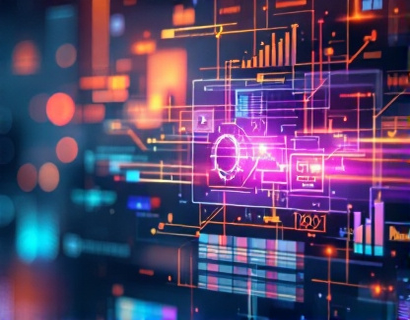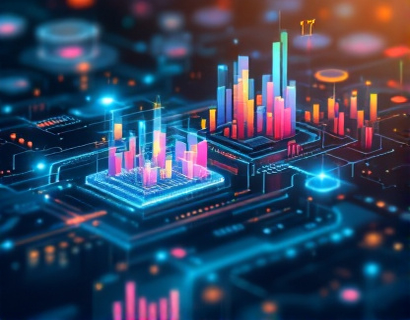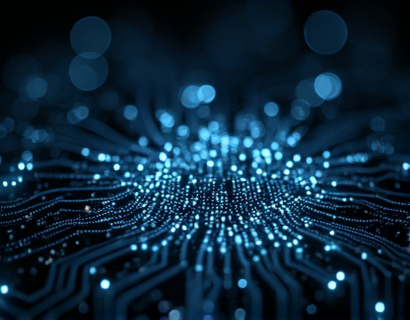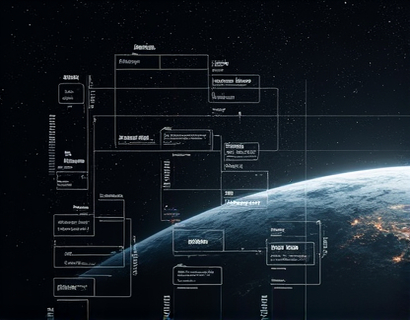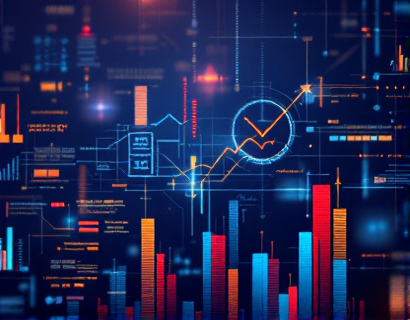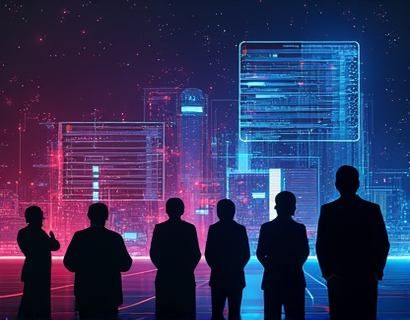Decentralized Productivity Boost: Harnessing AI and Crypto for Next-Gen App Solutions
The intersection of artificial intelligence (AI) and cryptocurrency is giving rise to a new era of productivity tools, redefining how we approach tasks and collaborate. This article explores the next generation of productivity applications that leverage the power of decentralized technologies to enhance efficiency and streamline workflows for tech professionals and early adopters. By understanding the synergy between AI and crypto, we can uncover the transformative impact these technologies have on digital workflows and the future of productivity.
Understanding Decentralized Applications
Decentralized applications, or dApps, operate on blockchain networks, which are distributed ledgers maintained by a network of nodes rather than a central authority. This decentralized nature ensures transparency, security, and resilience. Unlike traditional applications hosted on centralized servers, dApps are immune to single points of failure and censorship, making them ideal for creating robust and trustworthy productivity tools.
The combination of AI and decentralization creates a powerful framework for developing applications that not only perform tasks efficiently but also ensure data integrity and user privacy. AI algorithms can process vast amounts of data, learn from patterns, and make predictions, while blockchain technology provides a secure and transparent environment for data storage and transaction processing.
AI in Decentralized Productivity Tools
AI plays a crucial role in enhancing the functionality of decentralized productivity tools. Machine learning models can automate repetitive tasks, provide intelligent suggestions, and optimize workflows. For instance, AI-driven virtual assistants can manage schedules, prioritize tasks, and even predict deadlines based on historical data and current project dynamics.
In a decentralized setting, these AI-driven assistants can operate independently across multiple nodes, ensuring that tasks are handled efficiently without the need for a central server. This not only improves performance but also reduces the risk of data breaches and unauthorized access. The integration of natural language processing (NLP) allows users to interact with these tools using voice commands or text, making the user experience more intuitive and seamless.
Cryptocurrency and Decentralized Economics
Cryptocurrency adds another layer of innovation to decentralized productivity tools by introducing decentralized economics. Tokenization enables the creation of utility tokens that can be used within the ecosystem to reward users for contributing value, such as completing tasks or providing computational resources. These tokens serve as a form of digital currency, incentivizing participation and fostering a community-driven approach to productivity.
The use of smart contracts, self-executing contracts with the terms directly written into code, ensures that transactions are transparent and tamper-proof. This eliminates the need for intermediaries, reducing costs and increasing efficiency. For example, a decentralized task management platform can use smart contracts to automatically distribute tokens to team members based on their contributions, ensuring fair compensation without the need for manual oversight.
Practical Applications of Decentralized Productivity Tools
The practical applications of decentralized productivity tools are vast and varied, catering to different industries and use cases. Here are some examples of how these tools are transforming the way we work:
- Collaborative Project Management: Decentralized platforms can facilitate real-time collaboration among team members across the globe. AI can optimize task allocation and track progress, while blockchain ensures that all changes are recorded and verifiable.
- Content Creation and Monetization: Writers, designers, and developers can use decentralized marketplaces to showcase their work and receive payments in cryptocurrency. AI can help match creators with potential clients based on their portfolio and reputation, streamlining the content creation process.
- Data Sharing and Analytics: Researchers and businesses can securely share and analyze data using decentralized storage solutions. AI algorithms can process large datasets to uncover insights, all while maintaining data privacy and ownership.
- Supply Chain Management: Decentralized applications can track the movement of goods in real-time, ensuring transparency and reducing fraud. AI can predict demand and optimize inventory levels, enhancing overall efficiency.
Benefits of Decentralized Productivity Tools
The adoption of decentralized productivity tools offers numerous benefits, making them an attractive option for tech professionals and early adopters:
1.Enhanced Security: Blockchain technology ensures that data is encrypted and distributed across multiple nodes, making it highly secure against cyber threats.
2.Increased Transparency: All transactions and interactions are recorded on the blockchain, providing a clear and immutable audit trail.
3.Reduced Costs: By eliminating intermediaries, decentralized tools can significantly lower operational costs.
4.Greater Autonomy: Users have full control over their data and assets, without relying on centralized authorities.
5.Community-Driven Innovation: Decentralized ecosystems encourage collaboration and innovation, as developers and users work together to improve the platform.
Challenges and Considerations
While the potential of decentralized productivity tools is immense, there are several challenges and considerations to keep in mind:
1.Scalability: Current blockchain technologies face scalability issues, which can limit the performance of decentralized applications. Solutions like layer 2 protocols and sharding are being developed to address this.
2.User Adoption: Educating users about the benefits and functionalities of decentralized tools is crucial for widespread adoption. User-friendly interfaces and comprehensive onboarding processes can help overcome this barrier.
3.Regulatory Uncertainty: The regulatory landscape for cryptocurrency and blockchain is still evolving. Staying informed and compliant with local laws is essential for developers and users alike.
4.Interoperability: Ensuring that different decentralized platforms can work together seamlessly is important for creating a cohesive ecosystem. Standards and protocols like Cosmos and Polkadot are being developed to enhance interoperability.
Future of Decentralized Productivity
The future of decentralized productivity tools is promising, with ongoing advancements in AI and blockchain technology paving the way for more sophisticated and user-friendly applications. As the ecosystem grows, we can expect to see:
1.More Advanced AI Integration: AI will become more sophisticated, enabling more complex tasks to be automated and optimized within decentralized environments.
2.Enhanced User Experiences: User interfaces will become more intuitive, with augmented reality (AR) and virtual reality (VR) integrating with decentralized applications to create immersive workspaces.
3.Broader Adoption: As the benefits become more apparent and the technology matures, decentralized productivity tools will gain traction across various industries, from healthcare to finance.
4.Ecosystem Expansion: New platforms and services will emerge, creating a rich and diverse ecosystem of decentralized applications that cater to a wide range of needs.
In conclusion, the convergence of AI and cryptocurrency is revolutionizing the way we approach productivity. Decentralized applications offer a secure, transparent, and efficient alternative to traditional tools, empowering users and fostering innovation. As these technologies continue to evolve, the potential for transformative change in digital workflows is immense.










